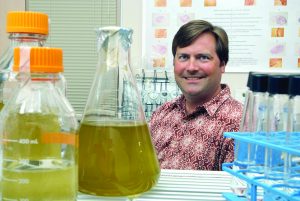Study: Oil May Have Diminished and Altered Phytoplankton Communities
– JANUARY 20, 2016
Scientists compared phytoplankton time-series data collected in Louisiana coastal waters after the Deepwater Horizon spill. They found that phytoplankton abundance was significantly lower in 2010 and that the community’s species composition significantly shifted immediately after the spill.
They published their findings in Environmental Pollution: Phytoplankton and the Macondo oil spill: A comparison of the 2010 phytoplankton assemblage to baseline conditions on the Louisiana shelf.
Previous phytoplankton studies suggest that the oil spill may have stimulated certain species while suppressing the growth of others, but none had examined how the in situ phytoplankton community responded to the spill. Researchers in this study assessed data on phytoplankton communities from 1990 – 2010, in years that had environmental conditions similar to 2010, and compared them with samples and data collected during and after the spill (May – October 2010).
Overall phytoplankton abundance was 85% lower in 2010 compared to previous years, consistent with many previous oil spill studies. After the spill, species shifted from ciliates and phytoflagellates to diatoms and cyanobacteria.
“We were surprised at the significant reduction in phytoplankton abundance and looked at the data in different ways to confirm our findings,” said study author Michael Parsons. “Such a large reduction could affect higher trophic levels (i.e., less food), but we currently do not know if this happened.”
While these findings suggest that the 2010 spill may have impacted phytoplankton abundance and community composition, the team noted that they did not directly link Macondo oil to their results. However, they maintain that this study currently represents the best opportunity to date to examine potential impacts from the Deepwater Horizon spill on phytoplankton communities using available baseline data and that the observed impacts are plausible.
The study’s authors are Michael L. Parsons, Wendy Morrison, Nancy Rabalais, R. Eugene Turner, and Kevin Tyre.
************
This research was made possible in part by a grant from the Gulf of Mexico Research Initiative (GoMRI) to the Coastal Waters Consortium (CWC). Other funding sources include the National Science Foundation (OCE-9633806), the NOAA Coastal Ocean Program (NA06OP0528, NA06OP0529, NA03NOS4780037, NA06NPS4780197, NA09NOS4780204), and a Minerals Management Service Cooperative Agreement with the Louisiana State University Coastal Marine Institute (Contract Number CA 14-35-0001-30660-19930).
The Gulf of Mexico Research Initiative (GoMRI) is a 10-year independent research program established to study the effect, and the potential associated impact, of hydrocarbon releases on the environment and public health, as well as to develop improved spill mitigation, oil detection, characterization and remediation technologies. An independent and academic 20-member Research Board makes the funding and research direction decisions to ensure the intellectual quality, effectiveness and academic independence of the GoMRI research. All research data, findings and publications will be made publicly available. The program was established through a $500 million financial commitment from BP. For more information, visit https://gulfresearchinitiative.org/.
© Copyright 2010- 2017 Gulf of Mexico Research Initiative (GoMRI) – All Rights Reserved. Redistribution is encouraged with acknowledgement to the Gulf of Mexico Research Initiative (GoMRI). Please credit images and/or videos as done in each article. Questions? Contact web-content editor Nilde “Maggie” Dannreuther, Northern Gulf Institute, Mississippi State University (maggied@ngi.msstate.edu).






